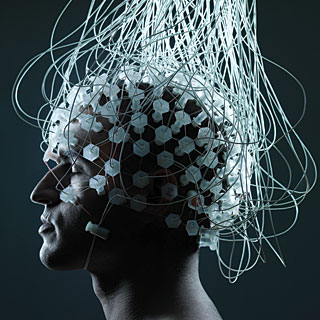Clear thoughts found amid the noise
 New research has digitally remastered our view of the brain, leading to a clearer picture which could help define better methods for brain-computer interfacing.
New research has digitally remastered our view of the brain, leading to a clearer picture which could help define better methods for brain-computer interfacing.
Scientists have found that when somebody knows they are using a brain-computer interface to control external devices with their mind – the interface actually works better.
In the same way that a record emits hisses, crackles and pops along with the intended signal – the brain has plenty of underlying noise and cross-talk among its conscious thoughts and focus. New research has allowed computers which monitor brain activity to cut out more of the irrelevant chatter within the lobes to more clearly identify what is going on in the mind.
Professor Stephen LaConte and a team at Virginia Tech in the United States have conducted a recent study to identify the specifics of the signal-to-noise ratio in the brain. LaConte and his team are experts looking to improve the techniques of functional magnetic resonance imaging – a relatively new ability to monitor, record and use the brain’s internal messages via a magnetic headset and computers.
The team asked 25 participants to control a screen by mentally counting numbers at fast and slow rates. For half the tasks, the subjects were told to use their thoughts to control the movement of the needle on the device they were observing; for the other tasks, they simply watched the needle. In their findings the research said subjects who were in control of the needle achieved a better whole-brain signal-to-noise ratio than those who simply watched the needle move.
“When the subjects were performing the counting task without feedback, they did a pretty good job... but when they were doing it with feedback, we saw increases in the signal-to-noise ratio of the entire brain. This improved clarity could mean that the signal was sharpening, the noise was dropping, or both. I suspect the brain was becoming less noisy, allowing the subject to concentrate on the task at hand,” LaConte said.
The study found that the act of controlling the computer–brain interface led to an increased classification accuracy, which corresponded with the improvements in the whole-brain signal-to-noise ratio.
“When people undergoing real-time brain scans get feedback on their own brain activity patterns, they can devise ways to exert greater control of their mental processes,” LaConte said.
“This, in turn, gives them the opportunity to aid in their own healing. Ultimately, we want to use this effect to find better ways to treat brain injuries and psychiatric and neurological disorders.”








 Print
Print